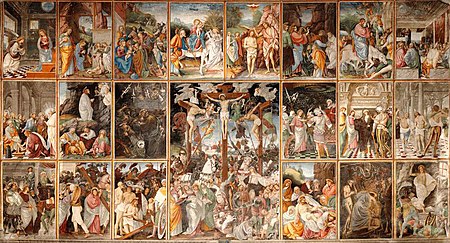Our website is made possible by displaying online advertisements to our visitors.
Please consider supporting us by disabling your ad blocker.
Life of Christ in art

The life of Christ as a narrative cycle in Christian art comprises a number of different subjects showing events from the life of Jesus on Earth. They are distinguished from the many other subjects in art showing the eternal life of Christ, such as Christ in Majesty, and also many types of portrait or devotional subjects without a narrative element.

They are often grouped in series or cycles of works in a variety of media, from book illustrations to large cycles of wall paintings, and most of the subjects forming the narrative cycles have also been the subjects of individual works, though with greatly varying frequency. By around 1000, the choice of scenes for the remainder of the Middle Ages became largely settled in the Western and Eastern churches, and was mainly based on the major feasts celebrated in the church calendars.
The most common subjects were grouped around the birth and childhood of Jesus, and the Passion of Christ, leading to his Crucifixion and Resurrection. Many cycles covered only one of these groups, and others combined the Life of the Virgin with that of Jesus. Subjects showing the life of Jesus during his active life as a teacher, before the days of the Passion, were relatively few in medieval art, for a number of reasons.[1] From the Renaissance, and in Protestant art, the number of subjects increased considerably, but cycles in painting became rarer, though they remained common in prints and especially book illustrations.
- ^ Schiller, I, 152
Previous Page Next Page


